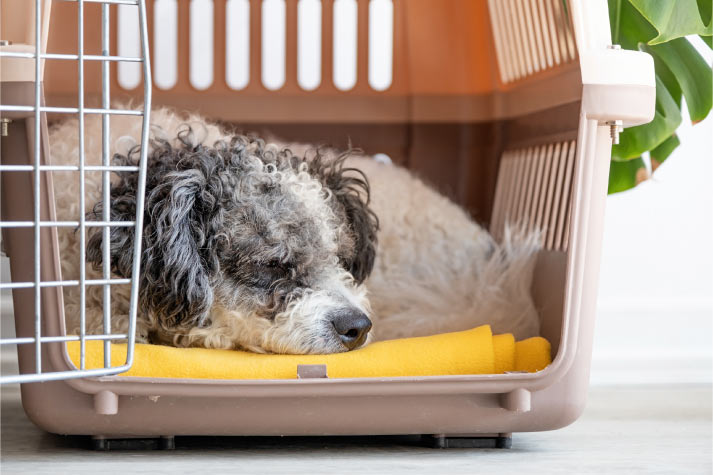


19 Feb
Many pet owners see crates as occasional necessities for travel or moving, but a proper crate is so much more than just a tool for transport. It serves as a safe, secure, and comfortable space where pets can relax, whether at home or on the go.
For pets that are anxious or overly energetic, a crate offers a safe space to retreat to. It also helps with gradual socialization and separating pets when needed. Whether it’s a trip to the vet or a cross-country journey, a crate ensures safer transportation and minimizes stress for both pets and pet parents.
If you drive with your pet frequently, a crate is essential. Unrestrained pets can be distractions and risk injury during sudden stops or accidents, and a properly secured crate keeps them safe and reduces travel anxiety.
A crate is essential for pet shipping too. Airlines also require pets to be secured in their crate for flights, and choosing the right crate can make the process much easier. Given its many benefits, and features, choosing the right crate for your pet is crucial. Here’s what to consider in a pet crate.
Different crates serve different purposes. If you need a versatile option for home and travel, a hard-sided crate is ideal. These are sturdy and meet safety requirements for both road and air travel, unlike soft carriers that may not hold up under pressure.
Some crates are specifically designed for airline travel and comply with IATA (International Air Transport Association) standards, which is a must if you plan on flying with your pet. Many airlines will refuse to fly your pet without an IATA certified pet crate. For pet shipping, an IATA approved pet crate is an absolute must. Such a crate is strong, sturdy, and ensures safety while in transit.
For home use, wire or mesh crates provide ventilation and visibility, making them great for crate training and longer stays. Soft-sided crates work well for small pets who need a lightweight, portable option for short trips.
An ideal crate should let your pet stand, turn around, and lie down comfortably without being too large. Oversized crates can increase travel costs due to volumetric weight; further, if a crate is too big, your pet may feel insecure, while one that is too small can cause discomfort and stress. Accurate measurement is key to finding the right fit. Measure your pet from the tip of the nose to the base of the tail for length, and from the floor to the top of the head for height. Add a few inches to ensure comfort.
Since each pet is unique, your pet’s behavior and personality influence your choice of crate.
If your pet is older or has joint issues, consider crates with padded flooring or space for a comfortable bed. For dogs prone to chewing, avoid fabric or mesh crates, as they can be easily destroyed.

A crate should always be a positive space for your pet. As long as you introduce your pet to their crate gradually and crate train them steadily, your pet will be more than comfortable when travelling.
Here’s how to introduce your pet to a crate properly:
With a wide range of pet crates available, research is key to finding the right one. Prioritizing size, material, and purpose ensures your pet stays comfortable and secure, whether at home or on the go. The right crate not only makes travel easier but also provides your pet with a familiar and cozy space wherever they are.

AUTHOR’S BIO
ARSH BHARDWAJ
I am passionate about language, storytelling and the human urge to connect Having paid close attention to marketing and branding as a craft for some time, I'm eager as ever to indulge my passion for prose.